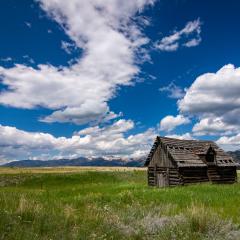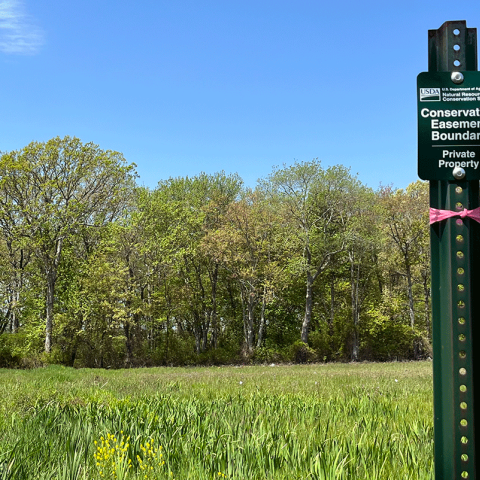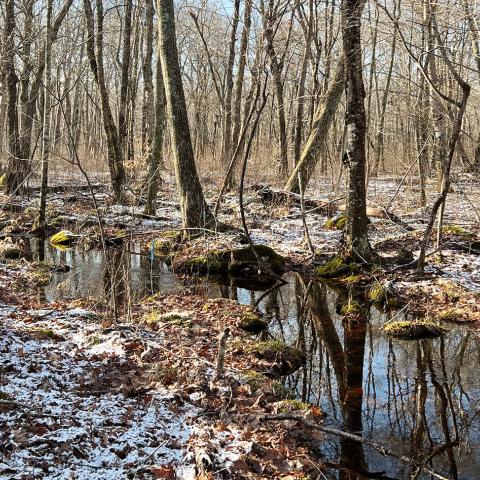NRCS is streamlining its Agricultural Conservation Easement Program to improve the program for landowners and partners. Learn more about these changes.
Benefits
The Agricultural Land Easements component of the Agricultural Conservation Easement Program protects the long-term viability of the nation’s food supply by preventing conversion of productive working lands to non-agricultural uses. Land protected by agricultural land easements provides additional public benefits, including environmental quality, historic preservation, wildlife habitat and protection of open space. Additionally, Agricultural Land Easements leverage local partnerships to match NRCS funding and local partners are responsible for the long-term stewardship of the easement.
Who is eligible?
- Eligible partners include American Indian tribes, state and local governments and non-governmental organizations that have farmland, rangeland or grassland protection programs.
- Eligible landowners include owners of privately held land including land that is held by tribes and tribal members.
- All landowners, including required members of landowner-legal entities, must meet adjusted gross income (AGI) limitations and must be compliant with the HEL/WC provisions of the Food Security Act of 1985.
What land is eligible?
Land eligible for agricultural easements includes private or Tribal land that is agricultural land, cropland, rangeland, grassland, pastureland and nonindustrial private forest land. NRCS will prioritize applications that protect agricultural uses and related conservation values of the land and those that maximize the protection of contiguous acres devoted to agricultural use, including land on a farm or ranch.
Eligible Land Types must also meet one of the four following land eligibility criteria:
- Parcels enrolled to protect Prime, Unique, or Other productive soil.
- Parcels enrolled to provide protection of grazing uses and related conservation values.
- Parcels containing historical or archeological resources.
- Land that furthers a state or local policy consistent with the purposes of ACEP-ALE.
How does it work?
NRCS provides financial assistance to eligible partners for purchasing Agricultural Land Easements that protect the agricultural use and conservation values of eligible land.
For working farms, the program helps farmers and ranchers keep their land in agriculture. Under the Agricultural Land Easement component, NRCS may contribute up to 50 percent of the fair market value of the agricultural land easement.
The program also protects grazing uses and related conservation values by conserving grassland, including rangeland, pastureland and shrubland. Where NRCS determines that grasslands of special environmental significance will be protected, NRCS may contribute up to 75 percent of the fair market value of the agricultural land easement.
Agricultural Land Easements are permanent or for the maximum term allowed by law.
How do I find an eligible partner to hold my Agricultural Land Easement?
Visit the following websites to learn how to find an eligible partner to hold conservation easements.
How to get started?
Landowners - To learn more about ALE, contact your local NRCS office. An NRCS conservationist will visit you and evaluate your land to help you determine eligibility for the various components of ACEP. Another resource to learn about the program is the ACEP-ALE Toolkit for Landowners developed in partnership with American Farmland Trust and hosted on its Farmland Information Center website. The ACEP-ALE Toolkit is a collection of resources that includes webpages, factsheets, checklists, videos, and links to applicable policy, and NRCS forms to help landowners and entities participate in ACEP-ALE. It also includes a Guide to ACEP-ALE for Heirs’ Property Landowners.
Eligible Entities - To learn more about ALE, please contact your NRCS state office programs staff to inquire about how you can partner with NRCS to enroll conservation easements on eligible land. Additional resources include AFT’s ACEP-ALE Toolkit for Entities and the Land Trust Alliance’s Agricultural Land Easement Program Toolkit and Heirs' Property Toolkit.
How to Stay Connected?
Sign up for NRCS’s quarterly newsletter, ACEP-ALE News Flashes, which aims to keep our partners informed of the latest news and happenings related to NRCS easement programs. Send an email to SM.NRCS.Easement@usda.gov to sign up.
Easements Training Video
Understanding the Confirmation of Matching Funds Requirements Training Video







